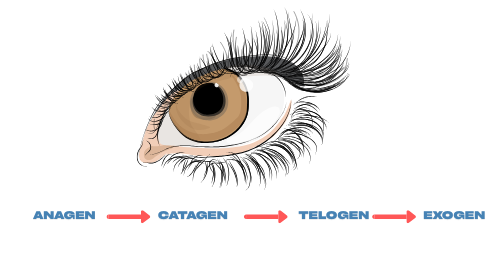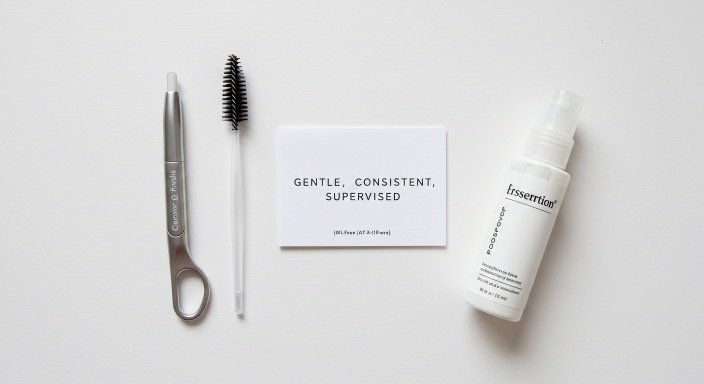From lash loss to lash love
You blink, rub your eyes, glance in the mirror, and notice a gap where lashes should be; that moment can feel alarming, yet you’re not alone in asking how long eyelashes take to grow back. Your lashes follow a natural cycle, so most will return on their own—if you give them time and the right care backed by eye-health guidance. To set expectations, we’ll cover realistic regrowth timelines, what changes the pace, how to support follicles safely, and when to call an eye-care professional, drawing on medical sources such as the American Academy of Ophthalmology (AAO) and peer-reviewed reviews on eyelash biology to keep advice precise and trustworthy NIH/PMC eyelash follicle review).
The quick answer: typical lash regrowth timelines
Most people see early regrowth within 6–8 weeks, with fuller replacement across several months, because the eyelash growth cycle runs more slowly than scalp hair and stays shorter in the active (anagen) phase . If lashes fell out from routine shedding, you’ll usually notice new hairs emerging by week six, while loss from extensions, trauma, or medical treatment can extend the timeline; eye-care organizations remind you to protect the lid margin while follicles recover to avoid infection or breakage that resets the clock
From lash loss to lash love
How lashes actually grow: the cycle you need to know

From Lash Loss to Lash Love
Eyelashes follow four stages: anagen (active growth), catagen (transition), telogen (rest), and exogen (shedding), and the combined cycle for lashes spans months rather than years due to a short anagen, which limits length and requires patience after any loss event (NIH/Books: hair follicle biology). Compared with scalp hair, the eyelash anagen phase lasts weeks, not years, so even with ideal care you’ll see gradual filling rather than instant fullness; this timing explains why gaps look prominent for a while and why gentle handling matters daily.
Why lashes fall out: common causes and what they mean for timing
Normal shedding removes older lashes at the end of the cycle, but excessive loss can follow extensions, aggressive makeup removal, blepharitis, over-curling, or medical treatments; identifying your cause helps you forecast time to recovery and pick the right care plan (Cleveland Clinic: madarosis/eyelash loss).
For example, traction from heavy extensions or rough removal inflames the lid margin and increases breakage, so regrowth may take longer than routine shedding because follicles need to calm before they can re-enter steady anagen growth (AAO: eyelash extensions safety).
After lash extensions: how long until the line looks full again
If your lashes thinned after extensions or adhesive damage, expect several weeks for baby lashes to peek through and several months for a more uniform line, especially if you stop tugging and switch to gentle eye-makeup habits to protect the lid margin during recovery.
The safest playbook uses lightweight mascara, oil-free removers, and soft spoolie grooming, because ophthalmology guidance links excess friction and oily removers to lid irritation that can prolong gaps and slow the visible fill-in phase (AAO: eyelash extensions safety).
After medical treatments: chemo, lash-toxic meds, and realistic expectations
When loss follows chemotherapy, many patients see lash regrowth begin a few weeks after therapy ends, with fuller appearance over several months; timelines vary by regimen, overall health, and post-treatment care, so use soothing lid hygiene and avoid lash trauma while new hairs emerge (National Cancer Institute: hair loss and regrowth).
If a prescription medication contributes to lash loss, discuss alternatives with your clinician; never stop a prescribed drug on your own, and ask about gentle eye-area routines to protect follicles as your care team adjusts therapy (Mayo Clinic: hair loss—symptoms and causes).
After inflammation or blepharitis: treat the lid first to help lashes return
Blepharitis—chronic inflammation of the eyelid margins—can cause lash thinning until the lid calms, so daily lid hygiene often sits at the center of recovery: warm compresses, gentle cleansing, and avoiding heavy eye cosmetics during flares while you follow doctor guidance if antibiotics or anti-inflammatories are needed (AAO: blepharitis overview).
Because inflamed lids lose lashes more easily, ophthalmologists emphasize cleaning routines that balance the lid microbiome and reduce crusting, which lets follicles re-enter anagen without constant irritation that would delay growth.
How to support regrowth naturally: habits that actually help
Focus on three pillars: protect the lid margin, reduce mechanical stress, and nourish follicles from the inside; that means gentle removal of makeup, no rubbing, and daily hygiene, plus balanced nutrition that supports hair biology rather than miracle claims that promise inches overnight (NIH/Books: hair follicle biology).
Small choices add up: switch to non-waterproof mascara most days, avoid lash curlers on fragile regrowing hairs, and keep brushes clean because AAO notes that old, contaminated cosmetics raise infection risk that can set growth back again.
Do lash serums work? what evidence says about OTC and prescription options

From Lash Loss to Lash Love
Most over-the-counter serums rely on peptides, humectants, and conditioning oils that can make lashes feel flexible, but clinical regrowth evidence remains limited; by contrast, bimatoprost 0.03% (brand: Latisse®) carries FDA approval for eyelash hypotrichosis and increased length, thickness, and darkness when used as prescribed under medical supervision.
Because bimatoprost is a prostaglandin analog, the FDA and ophthalmologists warn about potential side effects such as eyelid darkening, iris color change, or irritation, so you should speak with an eye-care professional before starting therapy, and stop if you notice troublesome symptoms (FDA: bimatoprost safety information).
Nutrition and eyelashes: what helps and what’s hype
Your lashes depend on the same building blocks as other hairs, so adequate protein, iron, zinc, vitamin D, and omega-3 fatty acids support normal growth cycles; a nutrient-dense diet protects against deficiency-related shedding but won’t bypass the built-in length of the lash growth phases.
Dermatology sources also remind you that biotin helps only when deficient, and high-dose supplements can skew lab tests, so discuss testing before you add pills, and prioritize whole foods that deliver steady support without side effects (Mayo Clinic: hair loss—symptoms and causes).
From Lash Loss to Lash Love
Daily routine: a 30-day lash-friendly plan
Day 1–7: retire old eye makeup, clean brushes, and switch to gentle, oil-free remover; set a nightly lid-hygiene routine with warm compresses and a mild cleanser so follicles stay clear while baby lashes break through.
Day 8–21: avoid waterproof mascara except for events because its removal takes more force, then brush lashes upward with a clean spoolie each morning to keep them untangled without tugging; if your clinician approves a serum, apply as directed and monitor comfort closely.
Day 22–30: keep the routine steady, manage sleep and stress to protect hair cycles, and schedule an eye-care visit if you see persistent gaps, lid redness, or pain because early medical attention prevents complications that slow regrowth (Mayo Clinic: hair loss—symptoms and causes).
From Lash Loss to Lash Love
Mascara, removers, and rub-free cleansing that protect new growth
Choose water-based, non-tubing, non-waterproof mascaras on most days and remove makeup by pressing—not scrubbing—an oil-free pad over closed lids for several seconds before gliding downward to lift pigment without friction; ophthalmology guidance stresses that less rubbing means less breakage at the lid margin, which keeps new hairs intact through early anagen.
If you wear contacts, remove them before cleansing, because public-health advice notes that debris trapped behind lenses irritates the ocular surface and raises infection risk that can derail a fragile regrowth timeline.
From Lash Loss to Lash Love
Extensions and falsies during recovery: smart rules to avoid setbacks
You can wear falsies occasionally once baby lashes feel sturdy, but pick lightweight bands and latex-free adhesive and remove them with patience, since AAO cautions that heavy strips or rushed removal increase traction and break regrowing lashes at the root; save extensions until the line looks even and lids feel calm for several weeks .
If you return to extensions, request lighter sets with fewer clusters, and schedule breaks, because repeated traction adds micro-trauma that lengthens the overall time it takes for your line to look naturally full again.
When to see a doctor: red flags you shouldn’t ignore
Call an ophthalmologist if you notice persistent lid swelling, crusting, pain, light sensitivity, discharge, or a sudden, patchy loss pattern, because these signs suggest infection, blepharitis, or an underlying medical condition that needs targeted care to protect follicles and vision alike .
If loss follows chemotherapy or systemic illness, your oncology or primary-care team can coordinate safe timing for cosmetics, serums, and lid-care steps that respect healing and keep the eye surface comfortable during the regrowth window.
Myths vs facts: separating internet promises from physiology
“Castor oil makes lashes grow inches in weeks” sounds tempting, yet evidence supports conditioning benefits more than true follicular stimulation, while bimatoprost remains the only FDA-approved option specifically for eyelash growth when prescribed for hypotrichosis; evaluate claims against peer-reviewed data before investing time or risking irritation near the eye.
Another myth says trimming lashes makes them grow faster; follicles sit in the lid skin, so trimming tips doesn’t change the cycle length—what helps most is protecting the lid, removing makeup gently, and letting physiology progress without daily stressors that break new hairs (NIH/Books: hair follicle biology).
Internal guides to pair with this one (keep readers on-site)
If you’re navigating eye-makeup choices during recovery, our practical guide on wearing mascara safely alongside eye treatments explains timing, product choices, and rub-free removal to protect fragile new hairs; read it here: Can You Wear Mascara with a Lash Lift?.
Curious about service timelines and maintenance habits that matter for the lash line overall? Our tutorial How Long Does a Lash Lift Last? breaks down aftercare rules that overlap with gentle routines you’ll use during regrowth as well.
Your friendly roadmap: what “normal” looks like week by week
Week 1–2: lids may feel bare, and baby stubble remains hard to see, so focus on hygiene and hands-off habits, because medical sources tie rubbing and contaminated cosmetics to avoidable setbacks in the fragile window.
Week 3–4: short new lashes appear along the margin and respond well to a soft spoolie and lightweight mascara, and as the lid stays clean you’ll notice the line even out; keep removers gentle to avoid breaking the shortest hairs before they anchor fully.
Week 5–8: gaps look smaller, and many people feel comfortable retiring falsies for most days, while consistent habits prevent new loss; if the line remains patchy or lids stay inflamed, schedule an eye-care visit for a targeted plan that brings the timeline back on track.
Final Thought
From lash loss to lash love, your journey relies on patience, protection, and informed choices guided by eye-health authorities; most people see early regrowth within 6–8 weeks and fuller lines over several months, but you control key variables by keeping lids clean, avoiding traction, choosing gentle makeup, and seeking medical advice when red flags appear.
Give your follicles the calm environment they need, follow safe routines every day, and you’ll watch sparse lines soften into a natural fringe that frames your eyes again, one healthy growth phase at a time.

